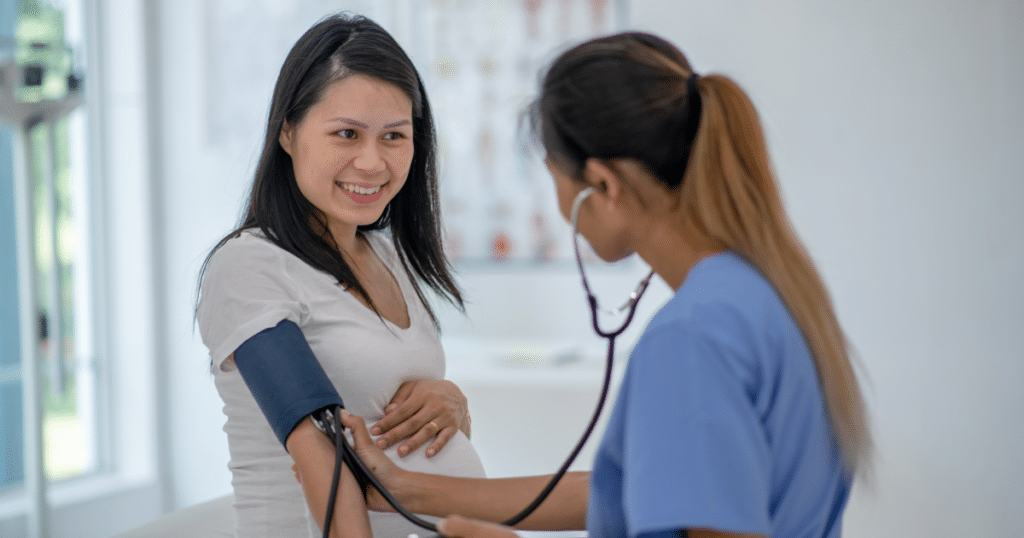
- All it takes is just a drop of saliva

When you’re pregnant, your blood pressure will be checked on your prenatal visits, but it’s important for you to monitor your blood pressure at home. In fact, it’s a good idea to know what your blood pressure is before you get pregnant so you have a baseline to refer to as you track your blood pressure during pregnancy. Blood pressure is relative. What is normal for you may be high for someone who starts their pregnancy at a lower blood pressure than is normal for you.
I strongly recommend you purchase a wrist blood pressure cuff and keep it handy during your pregnancy. Take your blood pressure about the same time at least once a day. These wrist cuffs may not be as accurate as
a cuff that wraps around your upper arm, but they are accurate enough to watch the increases and decreases in your blood pressure. You can even take your blood pressure cuff to your prenatal visit and check how closely the readings are to your doctor’s blood pressure cuff. Blood pressure normally goes up and down during the length of your pregnancy.

Your blood pressure usually drops in the first trimester, stays low in the second trimester, and then gradually increases in the third trimester.
Elevated blood pressure is often the first sign of pre-eclampsia. If you have high blood pressure, try to get it under control before becoming pregnant. In pregnancy, blood pressure hardly ever rises precipitously. It almost
always rises slowly and predictably. In my experience, it is far better to treat increasing blood pressure in its early stages.
It is also important to monitor your blood pressure even after your baby is delivered. Often, people assume that the possibility of eclampsia subsides once your baby is born, but it doesn’t work that way. Sometimes, the postpartum period is the worst time for blood pressure elevations. Continue to take your blood pressure after you are home. If it goes up, call your doctor.




The KNOWHEN® Ovulation Test tracks your ovulation using only a drop of your saliva. It identifies your five (5) most fertile days and the best days in your ovulation cycle if you’re trying to conceive.